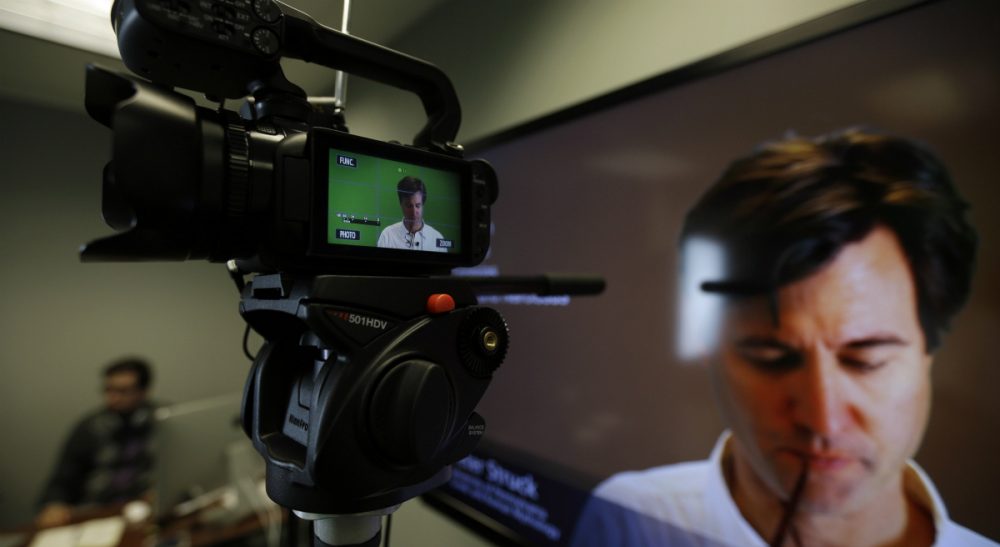Advertisement
Forging Real Connections In Virtual Classrooms

“Oh, you teach online classes? They’re a lot easier, right?”
The notion that online courses are inherently lesser than their traditional face-to-face counterparts is a perception that exists outside the classroom, and it’s one I’ve seen among students. There’s trouble from within, too: In a recent survey of 2,799 online instructors and academic technology administrators, Inside Higher Ed found that only a quarter of respondents rated online classes' results as comparable to their in-class counterparts.
...if we’re willing to be creative, take risks with assignment design and digital technology, and use different tools to engage with our virtual students, we can have relationships with them that are every bit as authentic as those we build with students in our 'real' classrooms.
In the face of these somewhat discouraging findings, I throw in my lot with that optimistic minority. I’ve taught writing courses for more than a decade, and I have taught asynchronous online versions of those courses for several years. Often, I teach both at the same time. I’ve learned that if we’re willing to be creative, take risks with assignment design and digital technology, and use different tools to engage with our virtual students, we can have relationships with them that are every bit as authentic as those we build with students in our “real” classrooms, and we can help them meet their learning goals and outcomes in the same way, too.
The Inside Higher Ed survey also found that “meaningful student-teacher interaction is a hallmark of a quality online education, and that it is missing from most online courses.” I agree. In recent years, the popularity of Massive Open Online Courses (MOOCs) has surged. MOOCs can reach thousands and make content available to all kinds of students, including nontraditional learners, and that’s a great thing. The very breadth of those courses, however, limits the kind of dynamic, engaged interaction between students and instructors that sets more conventional online courses apart.
My online students may read model projects, watch a brief video I created on an assignment, and then brainstorm revision challenges with me via Skype, but their “aha” moments are no less of a breakthrough than the ones my students have when sitting across from my desk in office hours. There is nothing virtual or lesser about figuring out how to structure a paper or advance an argument, however that progress is made.
Meaningful interaction in the context of a virtual classroom means regular, consistent feedback from and communication with instructors via e-mail, virtual office hours, Skype sessions, written comments and Q & A forums. Accessibility and responsiveness are essential.
It also means delivery of course content through a variety of channels, including videos and screencasts, which give students an opportunity to see our faces, hear our voices and visualize the instructor behind the e-mails and assessments. The challenge here is balance, so that all the moving parts of an online course don’t supplant the focus on learning itself.
Advertisement
My online students may read model projects, watch a brief video I created on an assignment, and then brainstorm revision challenges with me via Skype, but their 'aha' moments are no less of a breakthrough than the ones my students have when sitting across from my desk in office hours.
Meaningful interaction also means providing students ways to connect with each other independent of the instructor. They respond to weekly discussions, leave comments on student blogs, and work on virtual group projects, thus creating the kind of collaboration and conversation that would otherwise take place in the physical classroom.
There is one more essential component: Student involvement. We can offer all the tools we have at our disposal in the most effective ways we know how, but if our students don’t take advantage of them and become proactive participants in their learning, we’re as stymied as we are when our in-person students eschew office hours, fail to join in classroom discussions, and skip classes. In the end, the onus is on the students to virtually show up as much as it is on instructors to design effective and dynamic courses.
Related:
- The Online Education Revolution Drifts Off Course
- Here & Now: A Different Type Of Online Education Goes Viral
- Cognoscenti: Teaching In The Cloud: How Google Docs Are Revolutionizing The Classroom
